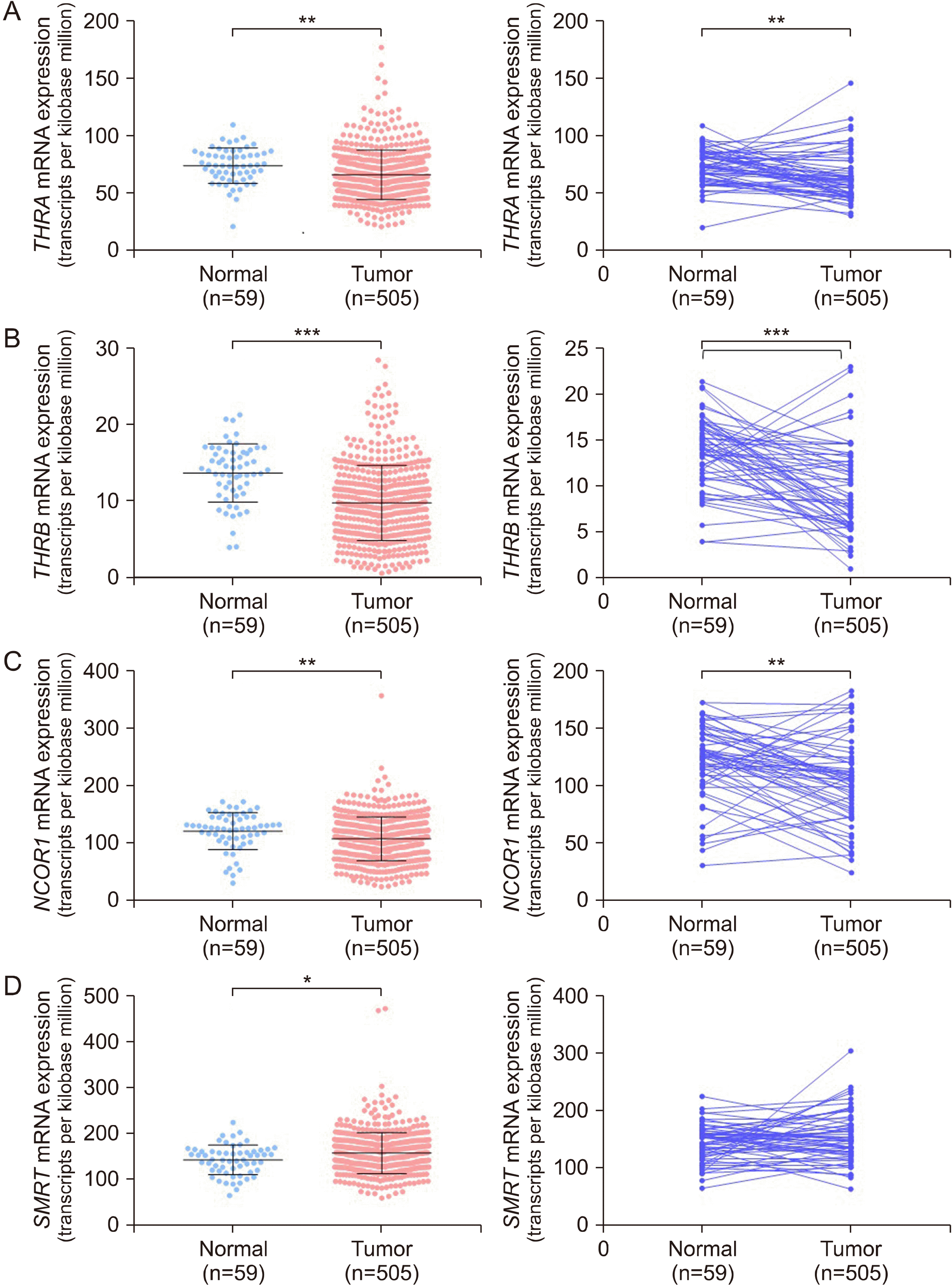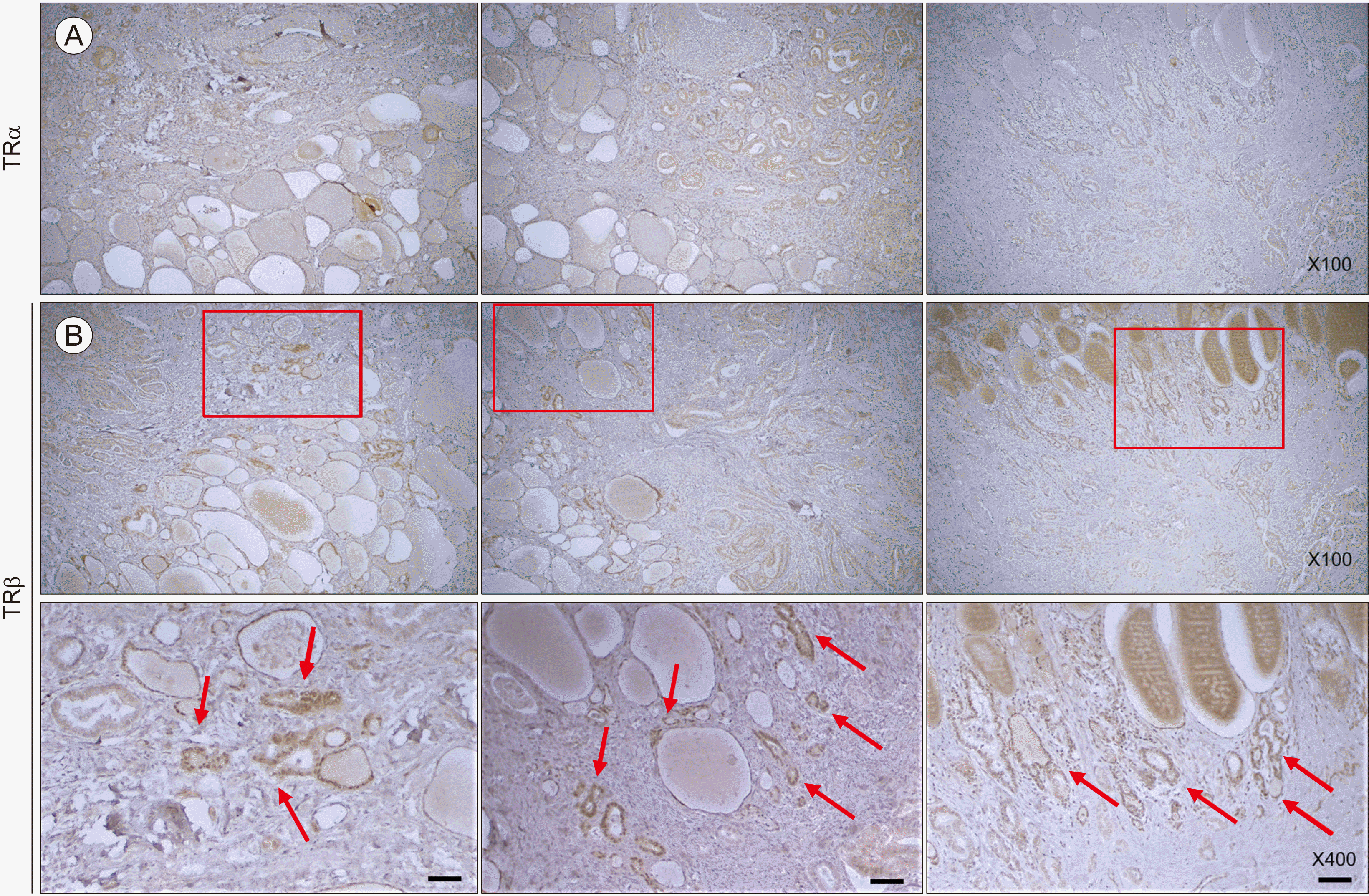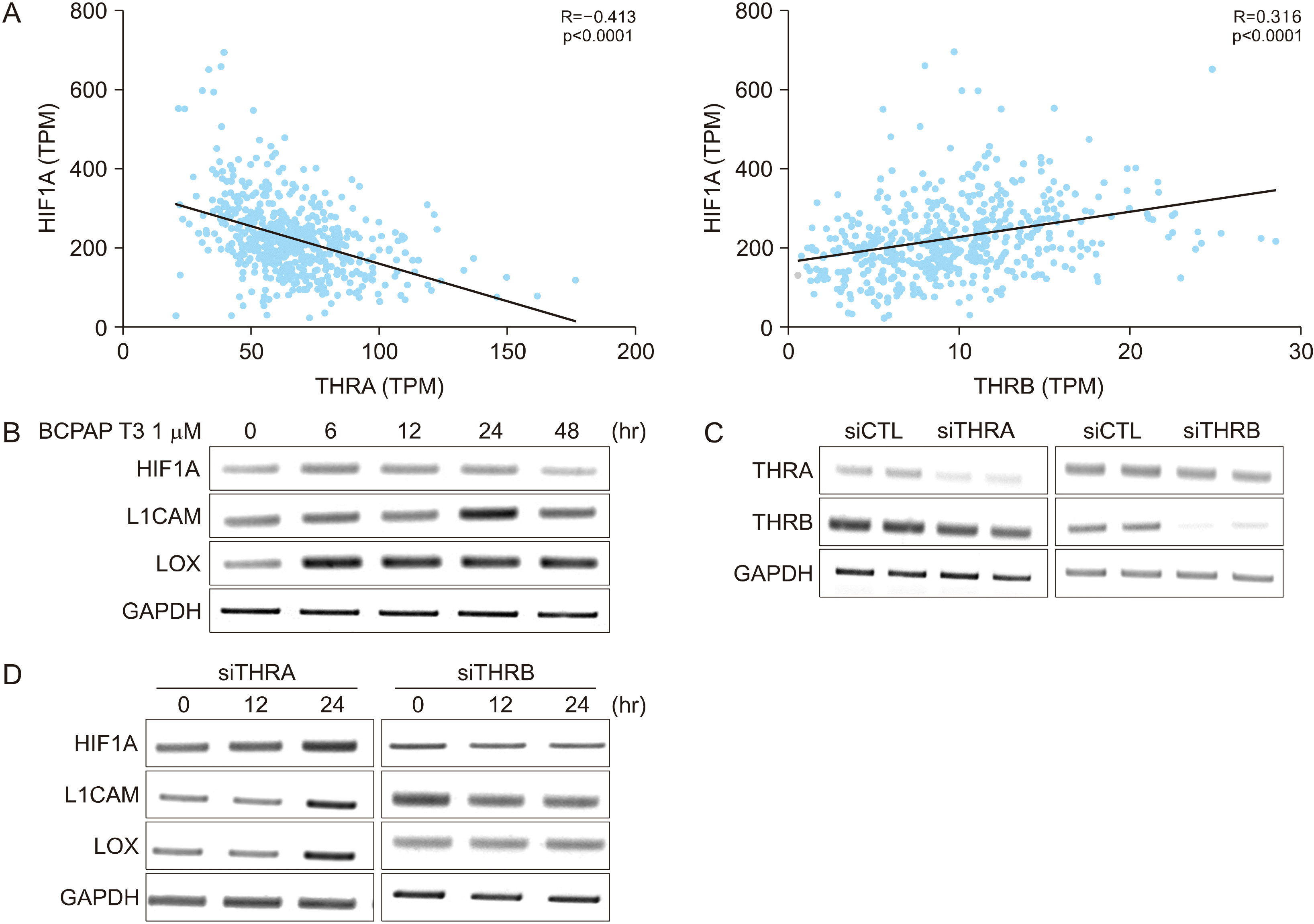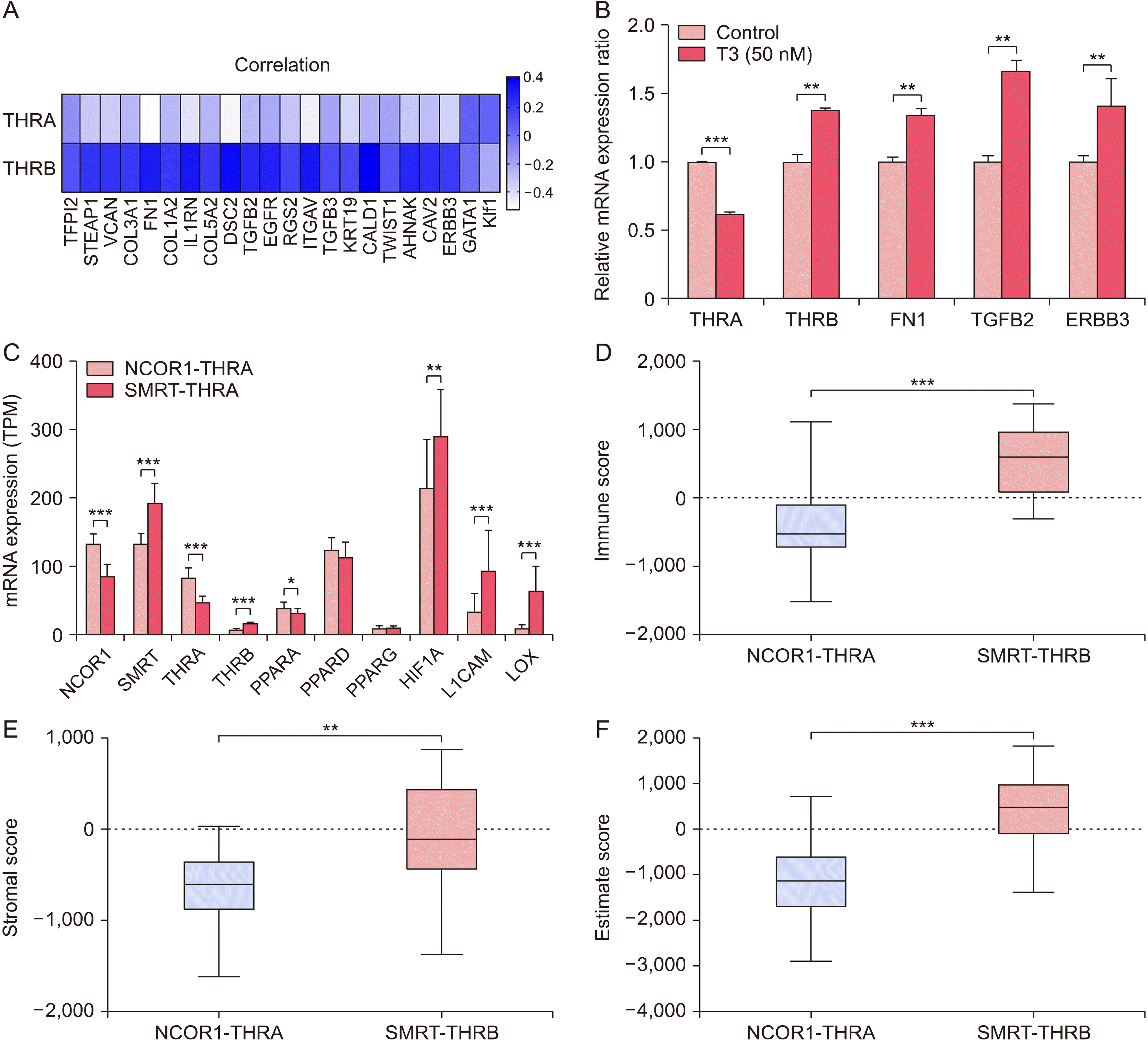2. Brent GA. Tissue-specific actions of thyroid hormone: insights from animal models. Rev Endocr Metab Disord. 2000; 1(1-2):27–33. DOI:
10.1023/a:1010056202122. PMID:
11704989.
3. Ortiga-Carvalho TM, Sidhaye AR, Wondisford FE. 2014; Thyroid hormone receptors and resistance to thyroid hormone disorders. Nat Rev Endocrinol. 10(10):582–91. DOI:
10.1038/nrendo.2014.143. PMID:
25135573. PMCID:
PMC4578869.

6. Jo YS, Ryu D, Maida A, Wang X, Evans RM, Schoonjans K, et al. 2015; Phosphorylation of the nuclear receptor corepressor 1 by protein kinase B switches its corepressor targets in the liver in mice. Hepatology. 62(5):1606–18. DOI:
10.1002/hep.27907. PMID:
25998209. PMCID:
PMC4618256.

7. Karpen SJ. 2015; Nuancing insulin's actions in liver through rapid
NCOR1 phosphorylation. Hepatology. 62(5):1344–5. DOI:
10.1002/hep.28014. PMID:
26223211.
8. Shimizu H, Astapova I, Ye F, Bilban M, Cohen RN, Hollenberg AN. 2015; NCoR1 and
SMRT play unique roles in thyroid hormone action in vivo. Mol Cell Biol. 35(3):555–65. DOI:
10.1128/MCB.01208-14. PMID:
25421714. PMCID:
PMC4285426.
9. Tran TV, Kitahara CM, de Vathaire F, Boutron-Ruault MC, Journy N. 2020; Thyroid dysfunction and cancer incidence: a systematic review and meta-analysis. Endocr Relat Cancer. 27(4):245–59. DOI:
10.1530/ERC-19-0417. PMID:
32045361.

10. Zhou W, Brumpton B, Kabil O, Gudmundsson J, Thorleifsson G, Weinstock J, et al. 2020; GWAS of thyroid stimulating hormone highlights pleiotropic effects and inverse association with thyroid cancer. Nat Commun. 11(1):3981. DOI:
10.1038/s41467-020-17718-z. PMID:
32769997. PMCID:
PMC7414135.

11. Yuan S, Kar S, Vithayathil M, Carter P, Mason AM, Burgess S, et al. 2020; Causal associations of thyroid function and dysfunction with overall, breast and thyroid cancer: a two-sample Mendelian randomization study. Int J Cancer. 147(7):1895–903. DOI:
10.1002/ijc.32988. PMID:
32215913. PMCID:
PMC7611568.

13. Lee J, Seol MY, Jeong S, Kwon HJ, Lee CR, Ku CR, et al. 2015; KSR1 is coordinately regulated with Notch signaling and oxidative phosphorylation in thyroid cancer. J Mol Endocrinol. 54(2):115–24. DOI:
10.1530/JME-14-0270. PMID:
25608512.

14. Yoshihara K, Shahmoradgoli M, Martinez E, Vegesna R, Kim H, Torres-Garcia W, et al. 2013; Inferring tumour purity and stromal and immune cell admixture from expression data. Nat Commun. 4:2612. DOI:
10.1038/ncomms3612. PMID:
24113773. PMCID:
PMC3826632.

15. Yuan C, Lin JZ, Sieglaff DH, Ayers SD, Denoto-Reynolds F, Baxter JD, et al. 2012; Identical gene regulation patterns of T3 and selective thyroid hormone receptor modulator GC-1. Endocrinology. 153(1):501–11. DOI:
10.1210/en.2011-1325. PMID:
22067320. PMCID:
PMC3249679.

16. Kim KS, Min JK, Liang ZL, Lee K, Lee JU, Bae KH, et al. 2012; Aberrant l1 cell adhesion molecule affects tumor behavior and chemosensitivity in anaplastic thyroid carcinoma. Clin Cancer Res. 18(11):3071–8. DOI:
10.1158/1078-0432.CCR-11-2757. PMID:
22472175.

18. Kalluri R, Weinberg RA. 2009; The basics of epithelial-mesenchymal transition. J Clin Invest. 119(6):1420–8. DOI:
10.1172/JCI39104. PMID:
19487818. PMCID:
PMC2689101.

19. Das V, Bhattacharya S, Chikkaputtaiah C, Hazra S, Pal M. The basics of epithelial-mesenchymal transition (EMT): a study from a structure, dynamics, and functional perspective. J Cell Physiol. 2019; [Online ahead of print]. DOI:
10.1002/jcp.28160. PMID:
30723913.

21. Pemberton HN, Franklyn JA, Kilby MD. 2005; Thyroid hormones and fetal brain development. Minerva Ginecol. 57(4):367–78. PMID:
16170282.
22. Jeong S, Kim IK, Kim H, Choi MJ, Lee J, Jo YS. 2020; Liver X receptor beta related to tumor progression and ribosome gene expression in papillary thyroid cancer. Endocrinol Metab (Seoul). 35(3):656–68. DOI:
10.3803/EnM.2020.667. PMID:
32814418. PMCID:
PMC7520597.
23. Lu Y, Chan YT, Tan HY, Li S, Wang N, Feng Y. 2020; Epigenetic regulation in human cancer: the potential role of epi-drug in cancer therapy. Mol Cancer. 19(1):79. DOI:
10.1186/s12943-020-01197-3. PMID:
32340605. PMCID:
PMC7184703.

25. Li J, Li K, Dong X, Liang D, Zhao Q. 2014; Ncor1 and Ncor2 play essential but distinct roles in zebrafish primitive myelopoiesis. Dev Dyn. 243(12):1544–53. DOI:
10.1002/dvdy.24181. PMID:
25156564.

27. Choi JB, Lee WK, Lee SG, Ryu H, Lee CR, Kang SW, et al. 2018; Long-term oncologic outcomes of papillary thyroid microcarcinoma according to the presence of clinically apparent lymph node metastasis: a large retrospective analysis of 5,348 patients. Cancer Manag Res. 10:2883–91. DOI:
10.2147/CMAR.S173853. PMID:
30214283. PMCID:
PMC6118257.

28. Lee SG, Lee WK, Lee HS, Moon J, Lee CR, Kang SW, et al. 2017; Practical performance of the 2015 American Thyroid Association guidelines for predicting tumor recurrence in patients with papillary thyroid cancer in South Korea. Thyroid. 27(2):174–81. DOI:
10.1089/thy.2016.0252. PMID:
27750028.

29. McKelvey BA, Zeiger MA, Umbricht CB. 2020; Exploring the epigenetic regulation of telomerase reverse transcriptase (TERT) in human cancer cell lines. Mol Oncol. 14(10):2355–7. DOI:
10.1002/1878-0261.12798. PMID:
32920953. PMCID:
PMC7530778.

30. Yoon J, Lee E, Koo JS, Yoon JH, Nam KH, Lee J, et al. 2020; Artificial intelligence to predict the BRAFV600E mutation in patients with thyroid cancer. PLoS One. 15(11):e0242806. DOI:
10.1371/journal.pone.0242806. PMID:
33237975. PMCID:
PMC7688114.

31. Lee WK, Lee J, Kim H, Lee SG, Choi SH, Jeong S, et al. 2019; Peripheral location and infiltrative margin predict invasive features of papillary thyroid microcarcinoma. Eur J Endocrinol. 181(2):139–49. DOI:
10.1530/EJE-18-1025. PMID:
31146263.

32. Lu C, Cheng SY. 2010; Thyroid hormone receptors regulate adipogenesis and carcinogenesis via crosstalk signaling with peroxisome proliferator-activated receptors. J Mol Endocrinol. 44(3):143–54. DOI:
10.1677/JME-09-0107. PMID:
19741045. PMCID:
PMC3464095.

33. Aninye IO, Matsumoto S, Sidhaye AR, Wondisford FE. 2014; Circadian regulation of Tshb gene expression by Rev-Erbalpha (NR1D1) and nuclear corepressor 1 (
NCOR1). J Biol Chem. 289(24):17070–7. DOI:
10.1074/jbc.M114.569723. PMID:
24794873. PMCID:
PMC4059148.








 PDF
PDF Citation
Citation Print
Print



 XML Download
XML Download